The most important thing to bring with you hiking (aside from your wits) is water. But how much water should you bring hiking? On one hand, you want to make sure you’ve got enough water to stay hydrated for the trip. On the other hand, you don’t want to bring too much because water is so heavy to carry. Here is how you can calculate how much water you will really need for your hike.
The Quick Answer:
Adults usually need 2 cups of water per hour of hiking. Children usually need 1-2 cups per hour of hiking. However, you may need more of less than this depending on whether you can filter water along the way, weather conditions, and personal thirstiness. It’s always best to err on the side of caution and bring more water than you think you’ll need for the hike.
Step 1: How Long Will You Be Hiking?
If you’ve never been hiking before, this can be a bit tricky. Depending on the difficulty of the trail and your abilities, it will probably take you 30 to 60 minutes to walk a mile. Or, if you are hiking with a small child like I do, it could take you 2 ½ hours to walk a mile!
Usually trail guides will list the distance and the estimated time it will take to complete the trail. Be honest with yourself when looking at the time. Don’t assume you can “finish the trail faster” because you are in good shape. And, if you know you are in bad shape, add some extra time.
Also read: How long to complete a hike
Step 2: Calculate Cups per Hour
The general rule for how much water to bring when hiking is as follows:
- Adults: 2 cups (about 1/2 liter) of water for every 1 hour of hiking
- Children: 1-2 cups of water for every hour of hiking
So, if you calculate that your hike will be 5 hours, then you need to bring at least 10 cups (2.3 liters) of water per person. Bear in mind that these are just general rules! Some people drink a lot more water than this. However, it is a good guideline to go by.
*Depending on the terrain and incline, it can take a lot longer or shorter to hike a mile. Thus, the “cups per hour” approach is more accurate than “cups per mile.”
Step 3: Factor in the Weather Conditions
Obviously, if it is a hot day, then you are going to need to drink a lot more water than on a cool day. In very hot conditions, calculate 4 cups (1 liter) per hour!
Step 4: Is There a Reliable Water Source on the Hike?
I always plan my hikes around a water source. Because I have a water filter (I use the Sawyer Mini), it means that I don’t have to carry much water with me.
Note the water source must be reliable. Sometimes you will go hiking in the summer only to find out that the stream on the map has dried out for the season. There goes your water source! But, if there is a reliable source of water on your hike, you can just calculate how much water you’ll need to the refill point.
In backcountry, you usually only need to treat water of bacteria and protozoa (even if it looks clean, there are probably some nasty things in it!!!). In some areas though, viruses can be a problem and you’ll need a water purifier which can remove it. Chemicals from agricultural runoff are much harder to remove from water and you’ll need a filter with an activated charcoal element, such as the travel Berkey water filter.
Not sure what type of water filter you need? Read: Types of Hiking Water Filters and What They Treat
Step 5: Factor in Your Thirstiness
I drink A LOT of water. On my last hike with my daughter, I emptied our 2 liter water bladder in under 2 hours, and it wasn’t even that hot. Since I know this now, I always make sure to pack extra water so I don’t end up dehydrated.
Water Tips:
Err on the Side of Caution:
If you aren’t sure how much water to bring hiking, always err on the side of caution and bring more than you think you’ll need! For your first hike, calculate double the amount. You’ll be glad to have it (especially if you get lost 😉 )
Drink Up Before You Start Hiking:
Before you start your hike (and still have a water source), drink up a lot of water. This is especially good if you are trying to cut down water weight.
Take Small Sips As You Go:
If you feel thirsty, then you are already dehydrated. You should take small sips of water before you feel thirsty. I generally will take a few small sips of water every 10-15 minutes or so. This will help prevent you from getting dehydrated.
For Kids, Use a Water Bladder:
When hiking with kids, there is always a chance that they will knock the water bottle over and spill your precious water supply. For this reason, it might be better to use a water bladder than a standard Nalgene-style water bottle. Platypus water bladders can take a lot of abuse without breaking.
Hiking in cold weather?
Drinking cold water will make you feel colder. You will need an insulated water bottle that you fill with hot water on the start of your hike. If it is snowy or really cold, then you will also want a water bottle with a giant lid which you can easily remove while wearing gloves. Read more about water bottles for cold weather here.
Not sure what to eat while outdoors? I’ve written an eBook with over 50 dehydrator trail recipes, plus tons of advice on meal planning for backpacking trips.
Learn more here. Or buy it now.
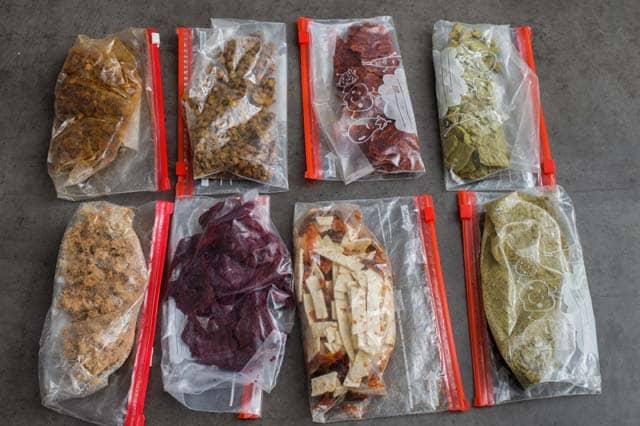
These meals have 13,700 calories and only weigh 6.9lbs dry. Just add water to rehydrate!
Image credit: “A Rainbow of Nalgene” (CC BY-ND 2.0) by iriskh


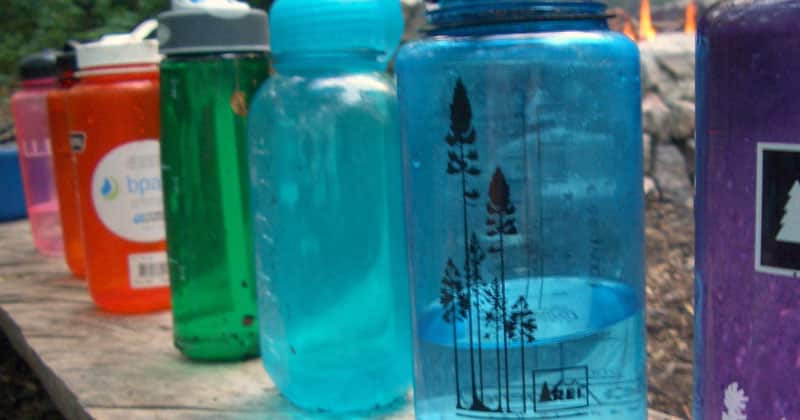
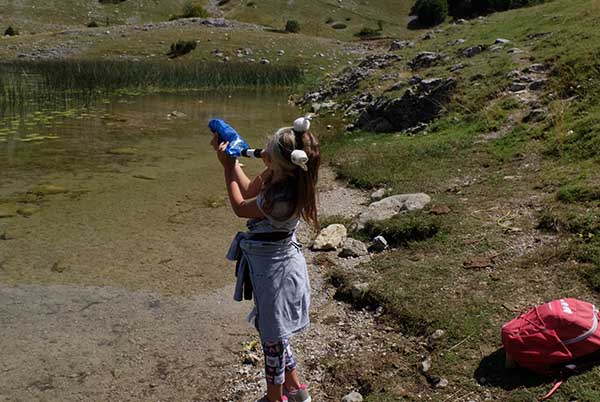
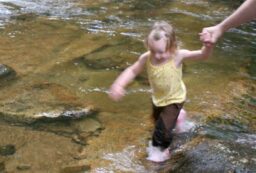

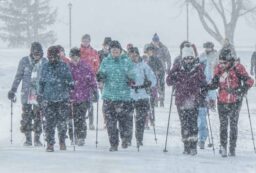







7 Comments
JEROME HATT
January 22, 2019 at 8:20 pm2 cups is less than a half liter, am I missing something?
Diane
January 23, 2019 at 12:01 pmThanks for catching that! Sometimes my theme messes up fractions :/ Yes, it’s supposed to be 2 cups = about 1/2 liter, not 1 liter. 🙂
Name *
February 28, 2019 at 2:56 pmOther factors are ,direct sun or shade, terrain (steep trails), pack weight, & wind to name a few more.
Tim Booth
July 22, 2019 at 2:21 pmGreat article. Very helpful. Thanks for putting it together.
Name *
September 26, 2019 at 7:29 pmGood job Mom goes camping in helping folks with issues such as how much water to carry. Sometimes I am surprised how much water I go through as it varies by season and exertion.
Roger Jenkins
Pursuing Balance Through Adventure
https://pursuingbalancethroughadventure.home.blog/
Heather L Maxwell
July 7, 2020 at 10:59 amI am new to hiking and I am taking my very first solo trip to The Garden of the Gods and hiking alone. I really don’t want to be weighed down bc I don’t want to get worn out and not make it back to base point. What are absolute essentials for a day hike on a budget? Thank you!! I tend to over pack bc I fear the worst if I don’t have a ton of things with me. Lol
Diane
July 11, 2020 at 8:29 pmIf you are new to hiking, then it’s better to overpack than underpack. There’s too much emphasis on “ultralight” and (IMO) people often end up going “stupid light” instead. Sure — you may not need a first aid kit on 99% of your hikes — but that 1% of the time you will REALLY need it! As for what you actually need, here’s a list: /hiking-packing-list/ You can save money by sticking to basics like using a trash bag as a pack cover, a recycled plastic water bottle, etc. No need for fancy gear for everything 🙂